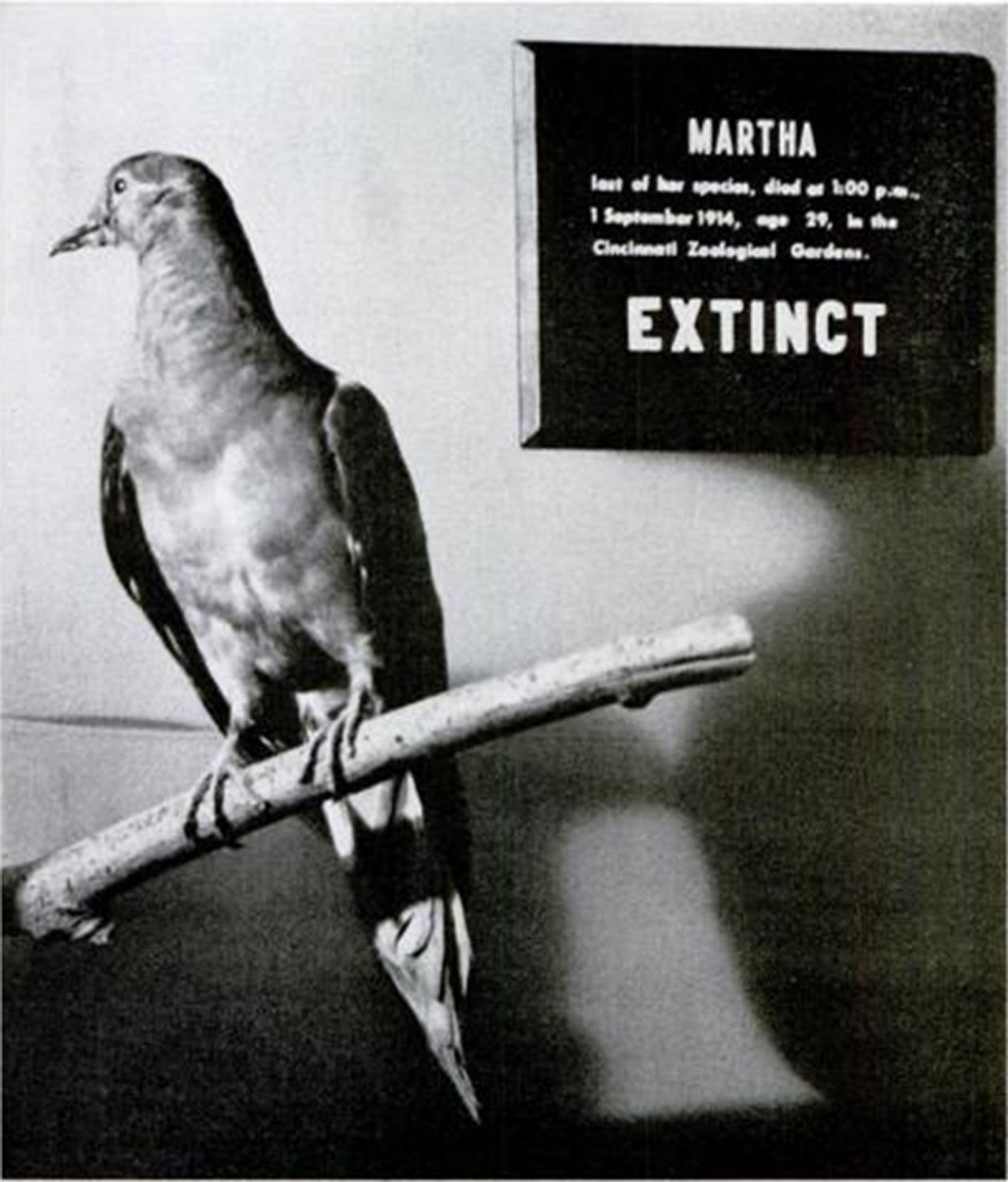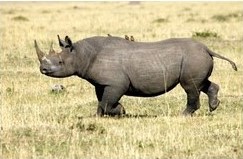Sudan is Sick and Another (Sub)Species is on the Brink of Extinction, But Will it Make Any Difference to How We Treat the World Around Us?
This blog was written by Olivia Pugh.
Sudan the rhino is sick and the last male Northern White Rhino may not be around for much longer. This sad news was broken to the world on the 1st of March by Ol Pejeta Conservancy in Kenya, where Sudan has lived since 2009. Sudan is suffering from a severe infection, and he isn’t recovering from it as quickly as his carers would like. While he has recovered some of his strength since the announcement, managing a walk and enjoying a mud bath, the updates are still cautiously optimistic and he isn’t out of the woods yet.

Sudan photo credit: Ol Pejeta Conservancy
Sudan is one of 3 Northern White Rhinos, the other 2 are females named Najin and Fatu who also live at Ol Pejeta. Due to age and health complications none of the 3 remaining rhinos are capable of reproducing, but there is a small ray of hope; in vitro fertilisation. It could be possible to take sperm and egg samples saved from dead Northern White Rhinos and implant them into a Southern White Rhino to carry to term, so that the sub-species may be able to continue. This however is a long way off, and will need a lot of research and a lot of funding to perfect the technique. This is now a truly last resort situation and that raises questions; how in this day and age can we allow a species to come to the precipice of extinction? How was nothing done before we got to this dire place? To answer this we should look to our history with extinction which seems to have become a particularly nasty human habit.
It is estimated that in the past 500 years around 1000 species have been lost[1]. It needs to be said that this only accounts for the species that were known to science; the number we could have lost before even discovering them is impossible to count. It is thought that we lose between 0.01 and 0.1% of all species on earth every single year.[2] Periodically a charismatic species will become extinct; generally a mammal and we will rightly be outraged that this could happen. But sadly there is more often than not little outcry for the lesser loved species which we have lost. Amphibians for instance are the most at risk group on our planet, but many of us, me included, would be hard pressed to name many, if any individual species.
From all corners of the natural world, birds to fish to mammals, species are disappearing before our very eyes, but this isn’t a new trend. We are losing species at such an alarming rate that it has been classified as the earth’s sixth mass extinction event. Extinction is a natural process, it is part of evolution, however the rate at which it is occurring today has only arisen before due to cataclysmic events like asteroids. And it isn’t that we didn’t know about extinction before now; high profile extinctions have been circulated in the public consciousness for decades if not centuries.

Martha, the last Passenger Pigeon. Photo credit: Smithsonian
In 1910 a bird named Martha who lived in the Cincinnati Zoo became a celebrity; her notoriety? That was due to her status as the last living Passenger Pigeon. These birds had once lived across most of North America and it is thought they once made up around 25-40% of the entire bird population of North America, numbering between 3 to 5 billion individuals.[3] Even a species as populous as this was soon hunted to near extinction, until only a handful of birds still existed in captivity. In 1897 a bill was introduced in Michigan asking that a ban be put on hunting the birds for 10 years to allow for population recovery. This was an empty gesture; the populations were long past any hope of recovery. But what this does show is that even then we were not ignorant of our decimating effect on the wildlife around us. However if the number of species that have gone extinct since then, including in recent years (but definitely not limited to); the Thylacine (or Tasmanian Tiger, last specimen died 1936), the Javan Tiger (last seen 1976), the Pyrenean Ibex (extinct 2000) and the West African Black Rhino (declared extinct 2011) tells us anything it’s that we still not have learnt our lesson.[4]
So where does all this leave Sudan and other species balancing on the abyss of extinction? Well if we continue as we have been so far, it doesn’t look good. It is no longer just a case of animals being hunted to extinction. Our way of life and our very presence on the earth is now pushing species to the edge of existence. Habitat loss, prey loss, climate change, these are just a few of the things we contribute to on a daily basis that is impacting the world around us. However the advent of social media has heralded a new age of public knowledge. Now not only can the population know that a species is going extinct (as it could in the era of print) but it can let its thoughts on this situation be heard. We can now email, tweet and publicly contact our law makers and people in power to tell them just what we feel about losing the wonderful creatures we share this earth with. We can use our votes to tell those in power what we think of their environmental policies and their actions (or lack thereof). We can use our hard earned money to tell multi-national corporations if we approve or not of their environmental impact. Because whilst there are countless numbers of amazing individuals; scientists, vets, rangers, fundraisers etc. working tirelessly to protect and work for the future of our natural world, only changes in policy and the actions of multi-national corporations are truly going to change anything.

Western Black Rhino. Photo credit: Save the Rhino
Time may be running out for Sudan, a truly magnificent creature if ever there was one, but hopefully his plight will not be in vein. Hopefully in this era of social vocalisation, social consciousness and social outrage we can unite and use our indignation to say enough! We have seen too many of our fellow creatures wiped from the face of this earth by our actions and we say no more. Because when it truly comes down to it, when enough of them have gone, then we will be on our way as well. Nature is an unimaginably complex web of connections and tangles and we are a part of that. We have no way of knowing which threads are holding us tight, and which threads once cut will unravel us for good.
Notes:
[1] ‘The Extinction Crisis’ http://www.biologicaldiversity.org/programs/biodiversity/elements_of_biodiversity/extinction_crisis/
[2] ‘How Many Species Are We Losing?’ http://wwf.panda.org/about_our_earth/biodiversity/biodiversity/
[3] ‘The Passenger Pigeon’ https://www.si.edu/spotlight/passenger-pigeon
[4] ’11 Animals That’s Are Now Extinct… And It’s Our Fault’ http://www.huffingtonpost.co.za/entry/11-extinct-animals_n_4078988#gallery/317674/1
 Olivia Pugh is the social media coordinator for a prominent South African wildlife vet in the Eastern Cape. She has a BA in English Literature from The University of Sheffield and an MA in Media & Communications from Goldsmiths University, London. She has worked in rhino conservation both in London and South Africa for the last 3 years.
Olivia Pugh is the social media coordinator for a prominent South African wildlife vet in the Eastern Cape. She has a BA in English Literature from The University of Sheffield and an MA in Media & Communications from Goldsmiths University, London. She has worked in rhino conservation both in London and South Africa for the last 3 years.
[1] ‘The Extinction Crisis’ http://www.biologicaldiversity.org/programs/biodiversity/elements_of_biodiversity/extinction_crisis/
[2] ‘How Many Species Are We Losing?’ http://wwf.panda.org/about_our_earth/biodiversity/biodiversity/
[3] ‘The Passenger Pigeon’ https://www.si.edu/spotlight/passenger-pigeon
[4] ’11 Animals That’s Are Now Extinct… And It’s Our Fault’ http://www.huffingtonpost.co.za/entry/11-extinct-animals_n_4078988#gallery/317674/1





